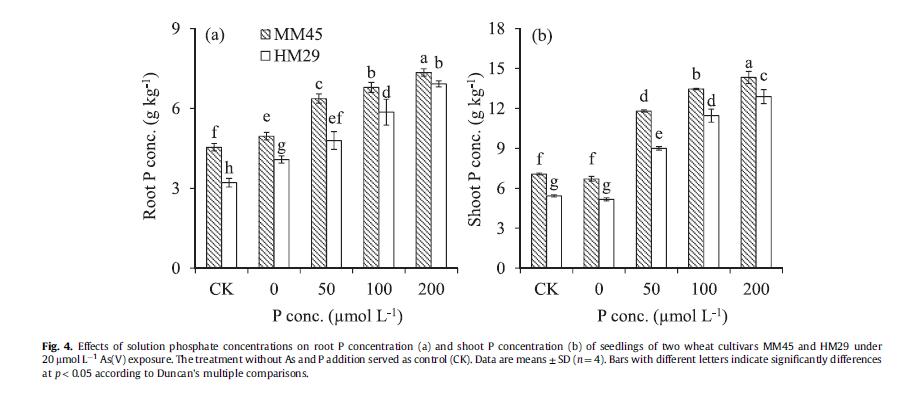Two wheat (Triticumaestivum L.) cultivars differing in arsenic (As)-tolerance were used to investigate theeffects of phosphorus (P) concentration and nutrient solution pH on As(V) toxicity and As(V) uptakekinetics, and to illustrate the mechanism of As(V) tolerance in wheat seedlings. Low pH and low phosphateconcentration enhanced wheat uptake of As, resulting in high As toxicity. The As(V)-tolerantcultivar MM45 exhibited higher relative root elongation than non-tolerant cultivar HM29 in all treatments,except that no genotypic difference was recorded for the solution P at 100 mmol L_1 or greater.Wheat seedling As(V) tolerance was positively correlated with P concentration in roots and shoots. Inshort-term (30 min) As(V)-uptake kinetics experiments, the maximum influx rate (Vmax) of As(V)increased with decreasing solution pH (from 7.0 to 6.0). Compared with HM29, although MM45 hadlowerVmax, its MichaeliseMenten constant (Km) did not exceed that of HM29 in all treatments. The Vmaxvalues of both cultivars were not significantly affected by phosphate treatments, except for HM29 whichhad significantly higher Vmax value in the presence of phosphate at pH 7.0. The Km values of the twocultivars increased by 9- to 20-fold when phosphate was present as opposed to absent from the uptakesolution. This study showed that the Vmax values are mainly increased by high pH and As(V) uptake Km ismainly increased by phosphate presence. Decreased As(V) influx rates during early stages and increasedP concentration in plant tissues are associated with increased As tolerance in wheat seedlings.




